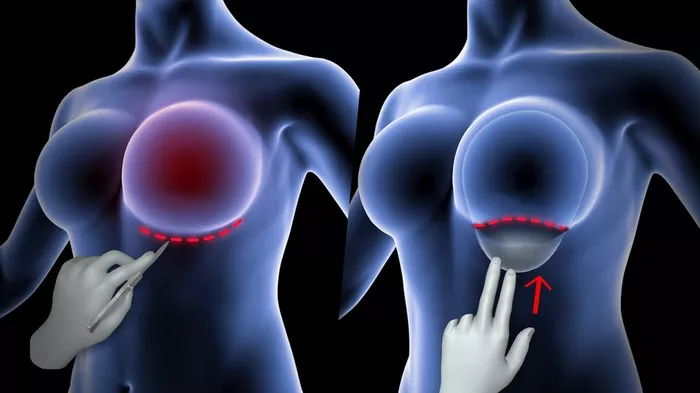Breast augmentation, also known as augmentation mammoplasty, is a surgical procedure aimed at enhancing the size and shape of the breasts. For individuals considering breast augmentation, one common concern is the level of pain associated with the procedure. In this article, we will explore the topic of pain in breast augmentation surgery, discuss the factors that contribute to discomfort, and provide insights into the recovery process.
Understanding Breast Augmentation Surgery
Breast augmentation involves the placement of breast implants to enhance the size, shape, and symmetry of the breasts. The procedure is typically performed under general anesthesia and can be customized to meet the individual’s aesthetic goals. The two primary types of breast implants used in augmentation surgery are saline-filled implants and silicone gel-filled implants.
Pain in Breast Augmentation: What to Expect
Pain is a subjective experience, and the level of discomfort can vary from person to person. While breast augmentation surgery is generally considered safe and well-tolerated, it is normal to experience some degree of pain and discomfort following the procedure. Here are some key factors that contribute to the pain associated with breast augmentation:
- Surgical Technique: The surgical technique employed during breast augmentation can influence the level of pain experienced. The extent of tissue manipulation, such as creating the pocket for implant placement, can impact the amount of discomfort during the initial recovery period.
- Individual Pain Threshold: Each person has a different pain tolerance level. Some individuals may experience more sensitivity or discomfort, while others may have a higher pain threshold and report milder discomfort.
- Implant Placement: The placement of the breast implants can also affect the level of pain experienced. Implants placed beneath the chest muscle (submuscular) may cause more discomfort initially due to the stretching and movement of the muscle. Implants placed above the muscle (subglandular) may result in less muscle-related pain but may cause more pressure and discomfort on the breast tissue.
- Implant Size and Profile: The size and profile of the implants used in breast augmentation can influence the amount of pain experienced. Larger implants may cause more discomfort due to the increased stretching of the tissues and potential strain on the incisions.
Postoperative Discomfort and Recovery Process
It is important to note that the discomfort experienced after breast augmentation is typically temporary and gradually improves over time. The initial recovery period can vary from person to person, but here are some common experiences and strategies to manage pain during this phase:
- Pain Medication: Your surgeon may prescribe pain medication to manage postoperative discomfort. It is important to follow the prescribed dosage and schedule as directed by your healthcare provider.
- Discomfort and Swelling: Swelling and discomfort are common after breast augmentation surgery. Applying cold compresses or ice packs to the breasts can help reduce swelling and provide temporary relief.
- Restricted Activities: Your surgeon will provide specific instructions on postoperative care and activity restrictions. It is essential to follow these guidelines to allow for proper healing and minimize discomfort. Avoid strenuous activities, heavy lifting, and upper body exercises during the initial recovery phase.
- Wearing a Surgical Bra: Your surgeon may recommend wearing a surgical or compression bra after the surgery. This provides support to the breasts, helps reduce swelling, and can alleviate discomfort.
- Proper Rest and Sleep Position: Getting adequate rest and maintaining proper sleep positions can contribute to a more comfortable recovery. Prop yourself up with pillows to elevate your upper body while sleeping to minimize pressure on the breasts.
- Open Communication with your Surgeon: It is important to maintain open communication with your surgeon throughout the recovery process. If you have concerns about pain or discomfort, discuss them with your surgeon, who can provide guidance and address any issues that may arise.
Timeline of Recovery
While every individual’s recovery is unique, here is a general timeline of what to expect following breast augmentation surgery:
- First Week: The initial few days after surgery are often the most uncomfortable. Pain and swelling are expected during this time, and it is important to rest and follow postoperative care instructions.
- First Month: Pain and discomfort gradually subside during the first month of recovery. Swelling starts to diminish, and you may begin to resume light activities as guided by your surgeon.
- Three to Six Months: By this stage, most patients experience a significant reduction in pain and discomfort. Swelling continues to decrease, and the breasts start to settle into their final shape and position.
- Six Months and Beyond: The majority of the pain and discomfort should have subsided by this point, and you can resume your normal activities and exercise routine as recommended by your surgeon.
Conclusion
Breast augmentation surgery is generally associated with some degree of pain and discomfort during the recovery period. However, the level of pain experienced can vary from person to person and is influenced by factors such as surgical technique, individual pain threshold, implant placement, and implant size. It’s important to note that the discomfort is temporary and gradually improves over time. Following postoperative care instructions, taking prescribed pain medication, and maintaining open communication with your surgeon are crucial for a smoother recovery process. Remember, the ultimate goal of breast augmentation is to enhance your appearance and boost your confidence, and many patients find the results well worth the temporary discomfort.


